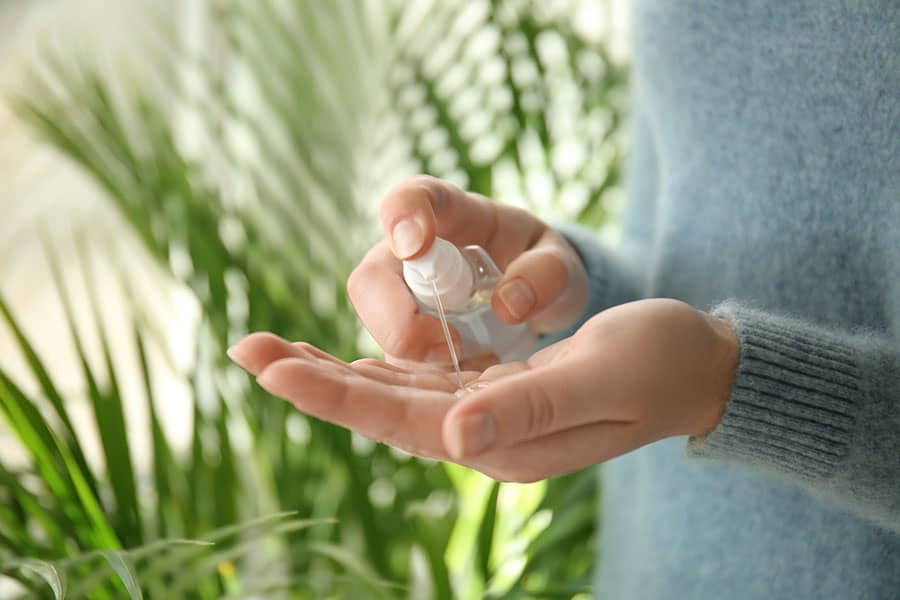
Central America and Costa Rica in particular, is an incredible place to travel! You can experience new cultCentral America, with Costa Rica’s rainforests, Belize’s beaches, and Nicaragua’s volcanoes, offers endless adventures.
Whether you’re exploring new cultures, snorkeling in the Caribbean, or hiking through cloud forests, you can enjoy it all on a budget. But getting sick can quickly derail your trip. Staying healthy in a tropical, developing region takes some planning. From avoiding contaminated water to protecting against mosquito bites, here’s your guide to a safe and enjoyable journey through Central America.
Sip Smart: Stick to Safe Water
In most of Central America, tap water isn’t safe to drink. Consuming it can lead to bacterial infections or parasites, which are among the fastest ways to ruin your trip. Even if you see locals drinking tap water, their systems may be accustomed to it—yours likely isn’t. Opt for bottled water, widely available at convenience stores and restaurants.
Be cautious with drinks mixed with tap water, like frescas (fruit juices blended with water and sugar), which are a Central American staple but often unsafe unless made with purified water. At reputable resorts or tourist-oriented restaurants, frescas may be prepared with bottled water, so ask before ordering. Ice is another hidden risk; skip it unless you’re sure it’s made from purified water. Brushing your teeth with bottled water is also a smart move to avoid accidental ingestion.
Eat Wisely: Choose Safe Foods

Central American cuisine is a delight, but food safety varies widely. Restaurants here rarely face strict health inspections, so even questionable establishments stay open. Stick to cooked foods to minimize risks. A classic Central American plate—grilled meat (pollo asado or carne asado), rice, beans, and fried plantains—is generally safe, minus the raw salad, which is often washed in tap water.
Fresh corn tortillas and fried eggs are also reliable choices, cooked fresh throughout the day. Queso fresco and other local cheeses, made from unpasteurized milk, carry a small risk of bacterial contamination. If you’re cautious, skip the cheese, though it’s less likely to cause issues than raw vegetables.
Street food, from tacos to tamales, is tempting but risky. Choose vendors in busy town squares where food is cooked on the spot—look for a visible grill or stove to ensure freshness. Avoid street food sold without clear preparation, as it may have been sitting out for hours. On buses, vendors often sell snacks, but these are best avoided.
If you’re starving, pick something popular with local commuters, as they’ll know which vendors are trustworthy. Prepackaged foods from stores are your safest bet for snacks. For fruit, stick to varieties with inedible peels, like bananas, mangoes, or pineapples, to avoid tap water contamination.
Keep Clean: Hygiene Is Your Friend

Good hygiene is your first line of defense in Central America’s tropical climate. Hand sanitizer is a must, especially in smaller towns where it’s hard to find. Use it before meals, as tap water isn’t clean enough for washing hands. Pack a small first aid kit with disinfectant like Neosporin, as minor cuts or scrapes from hiking or beach adventures can easily get infected in the tropics. Clean and treat wounds promptly to avoid complications. Moist towelettes or antibacterial gels are handy for quick cleanups when soap and water aren’t available. These simple habits can prevent a small mishap from turning into a trip-ruining infection.
Dodge Mosquitoes: Protect Against Bites
Mosquitoes in Central America carry serious diseases like malaria, dengue, Zika, and chikungunya, none of which have vaccines. In Costa Rica, malaria risk is low but present in rural areas like Limón and the northern Caribbean lowlands, especially during the wet season (April to November). To stay safe, apply insect repellent with 20-50% DEET or picaridin to exposed skin, avoiding eyes and mouth. Wear long sleeves, pants, and light-colored clothing, as mosquitoes are drawn to dark colors. Mosquitoes are most active at dawn and dusk, so limit outdoor time during these hours or stay vigilant.
At night, sleep in air-conditioned rooms with sealed windows or under an insecticide-treated mosquito net. If you’re in a homestay, hosts often provide nets, but confirm in advance. A fan can also help, as mosquitoes struggle to fly in breezy conditions. For high-risk areas, consider antimalarial medications like Malarone, doxycycline, or mefloquine, but consult a travel clinic 4-8 weeks before your trip to weigh side effects, which can include sun sensitivity or vivid dreams. Even in urban areas with lower risk, stay cautious, as poor sanitation can boost mosquito populations.
Be Prepared: Vaccinations and Medications
Before heading to Central America, visit a travel clinic to ensure you’re up to date on vaccinations. Hepatitis A and typhoid, spread through contaminated food or water, are highly recommended for Costa Rica and beyond. Depending on your itinerary, rabies, hepatitis B, or yellow fever vaccines may be advised, especially if you’re coming from a yellow fever risk country or spending time in rural areas. Travelers’ diarrhea affects up to 70% of visitors, so pack loperamide (Imodium) and consult a doctor about antibiotics like azithromycin for severe cases. These precautions can save you from unexpected health hiccups.
Watch for Other Risks: Animals and Altitude
Beyond food and mosquitoes, other health concerns lurk. Animal bites, especially from dogs, bats, or monkeys, can transmit rabies. Avoid touching or feeding unfamiliar animals, and seek immediate medical care if bitten or scratched, even if you’ve had a pre-travel rabies vaccine. In high-altitude areas like Costa Rica’s Monteverde or Chirripó, altitude sickness can cause headaches or nausea. Ascend gradually and stay hydrated to minimize risks. If you’re swimming, avoid freshwater lakes or rivers with poor sanitation, as they may harbor parasites.
Spend Smart: Quality Over Bargains
Central America is budget-friendly, but cutting corners can backfire. Hostels charging less than $12 per night often lack proper sanitation, increasing risks of bed bugs, scabies, or mosquito exposure. Spend a bit more for a cleaner, safer stay—many hostels offer discounts for longer stays, so negotiate if you’re settling in. When dining, avoid empty or unpopular restaurants, as locals may steer clear for a reason. Skip cheap liquor, especially in plastic bottles, to avoid methanol poisoning, a rare but deadly risk. Quality choices keep you healthy and comfortable.
Know the Health Risks by Region
Health risks vary across Central America. The table below highlights key concerns and precautions for Costa Rica and neighboring countries, based on recent data:
| Country/Area | Key Health Risks | Precautions |
|---|---|---|
| Costa Rica (Limón, Alajuela) | Malaria, dengue, Zika, chikungunya | Antimalarials for rural areas, mosquito repellent, hepatitis A/typhoid vaccines |
| Belize | Dengue, Zika, travelers’ diarrhea | Bottled water, food safety, insect protection |
| Nicaragua | Dengue, chikungunya, hepatitis A | Vaccinations, avoid tap water, mosquito nets |
| General Central America | Rabies, altitude sickness, unpasteurized dairy | Rabies vaccine for rural travel, gradual ascent, avoid raw dairy |
Enjoy Your Adventure with Confidence
Staying healthy in Central America doesn’t have to be daunting. By drinking bottled water, eating cooked foods, using hand sanitizer, and protecting against mosquitoes, you’ll sidestep most risks. Plan ahead with vaccinations, choose quality accommodations and restaurants, and stay aware of regional hazards like animal bites or altitude. With these tips, you can focus on the thrill of exploring Costa Rica’s rainforests, Belize’s reefs, or Nicaragua’s volcanoes, knowing you’re prepared for a safe, unforgettable journey. Pack your sense of adventure and dive into Central America’s magic—your healthy trip starts here!

